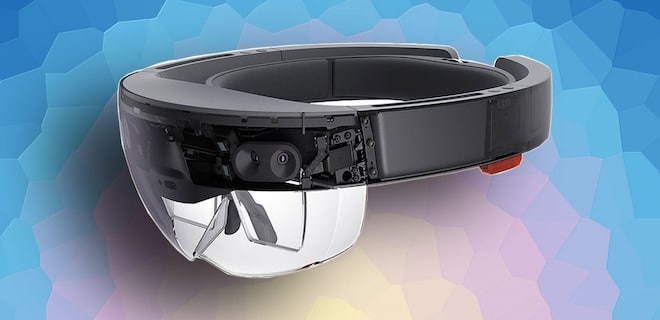Upon launching my public relations career, I knew most days would consist of writing and media relations. But I also knew I would occasionally get the unique opportunity to try new technologies that others have only read about. After all, it is a perk of the PR game. And boy, did I get one of the ultimate perks recently when using a Microsoft HoloLens running mixed reality apps from our client, Taqtile.
Why all the fuss? What’s mixed reality? What’s the HoloLens? Let me break it down for you.
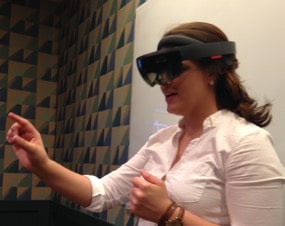
I got to try the HoloLens!
What is mixed reality?
Mixed reality combines the best aspects of augmented reality and virtual reality — creating a scene where the user is engaged in a holographic world, yet still active in the real world. What is the differences between augmented reality, virtual reality and mixed reality? Re/code has the best explanation.
What is the HoloLens?
The HoloLens is a holographic computer built into a headset that allows the user to see, hear and interact with holograms in a real world setting — such as an office or living space. Curious about how it works? Microsoft has a detailed breakdown.
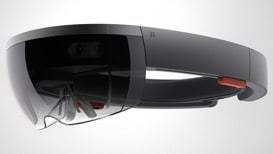
Image: Microsoft
Why is it cool?
Taqtile has been actively developing mixed reality applications for five years, and recently became one of seven firms to be a part of Microsoft’s HoloLens Agency Readiness Program. It has since created HoloLens applications for the 2016 PGA Tour and Real Madrid. We had the pleasure of visiting the company’s Seattle headquarters and testing out these new applications.
The first was a three-dimensional, bird’s-eye view of TPC Sawgrass, a well-known course on the PGA Tour. Taqtile created this application to enable players to become familiar with the course before the tournament. It also provided players with shot patterns from the previous year and a scoreboard showing how others performed. The experience immerses users into the course and overlays rich data, bringing the tournament to life.
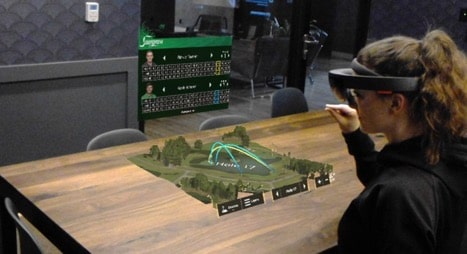
Image: GeekWire
The second application was a holographic projection for Real Madrid Club de Fútbol. This HoloLens experience offered fans the chance to see play-by-play breakdowns and stats. It also gave Real Madrid players the ability to analyze past performance — providing insights to better alter training for upcoming games.
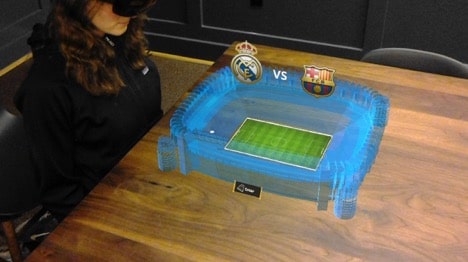
Image: GeekWire
As you can imagine, the experience was mind blowing. While it’s not ready for everyday consumer use due to the size of hardware and costs, commercial applications for the technology could be astounding. And, as developers like Taqtile continue to innovate, we could see it used on a more frequent basis by:
- athletes interactively analyzing game data and developing new strategies
- healthcare professionals, scientists and educators viewing human anatomy and conducting research
- military simulation or model combat scenarios for field training
- NASA helping space station crew view life-sized, animated illustrations for engineering
These are just the tip of the iceberg. While the Microsoft HoloLens is still in its infancy, it’s making giant waves in the world of technology. Having the chance to experience its capabilities in the early stages was nothing short of amazing.
The HoloLens release date has yet to be revealed. So until then, here’s a demonstration video from Microsoft that is sure to have you geeking out just like me.
https://youtu.be/aThCr0PsyuA
Header image via Pixabay.

